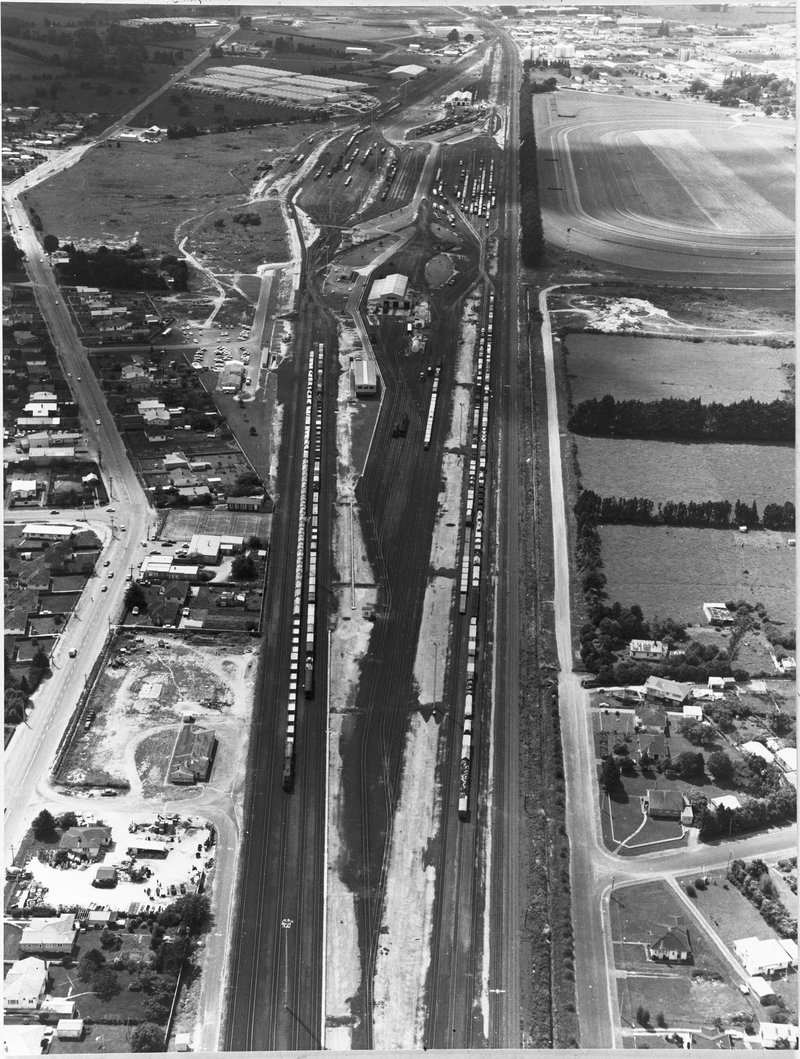Coupled in Motion Train Weighing (CIMTW) is a system that allows railway operators to weigh trains on the move. It was first used in New Zealand in 1971.
The ability to weigh trains on the move offers considerable benefits to railway operators. Accurate knowledge of trailing loads provides the opportunity to more closely match engine power to the train loading and route. This helps to avoid trains stalling on steeper grades and allows more efficient use of power for lighter trains where less power is needed. Coupled in Motion Train Weighing (CIMTW) can also identify out of balance loads, or overloads that may cause a derailment or damage to the vehicle or track if not corrected.
New Zealand’s first in motion train weighing system
CIMTW was first used in New Zealand in 1971 when New Zealand Railways (NZR) included the system in the design of their new marshalling yards, Te Rapa, in Hamilton. The yard opened on 10 January 1971 and incorporated electronic weighing equipment for trains arriving at both north and south entry points.
The weighbridges at Te Rapa continued to operate through a period that saw the railway operations, management and ownership undergo considerable changes. In the 1980s a computer-based Traffic Management System (TMS) came into use, that recorded all wagon movements throughout the system. In 1990 a new management system, AMICUS Marketing, was introduced to manage electronic weigh-billing and automate much of the operations work. The second part of this system, AMICUS Operations, introduced in 1992, integrated with the TMS.
By the early 1990s, government transport reforms had changed railway traffic patterns, and extensive marshalling yards like Te Rapa were no longer needed. The last Te Rapa electronic weighbridge closed in 1992.

Te Rapa Marshalling yards. Hamilton City Libraries HCL_05044
A new system of electronic train weighing
A new system-wide development of electronic train weighing was commissioned to replace the Te Rapa installations. This new Coupled in Motion Weighing system (CIMW) was rolled out over ten sites in the 1990s. The new system incorporated more sophisticated automatic vehicle identification and data processing. It enabled trains to be weighed at closer to normal operating speeds and interfaced with the AMICUS Operations and the Train Management System to allow vehicles to be identified and automatically associated with their weighings.
Further developments
By 2010 the CIMW system was technically obsolete and was superseded by new and refined technology with yet more features, including the ability to monitor the condition of vehicle axle bearings. It also has a more sophisticated alert system and interfaces with the National Train Control Centre via the internet.
The new system was installed at 10 of the 19 Automatic Vehicle Identification (AVI) sites around the country.
Entry by John Webley
Page last updated 07 November 2022
